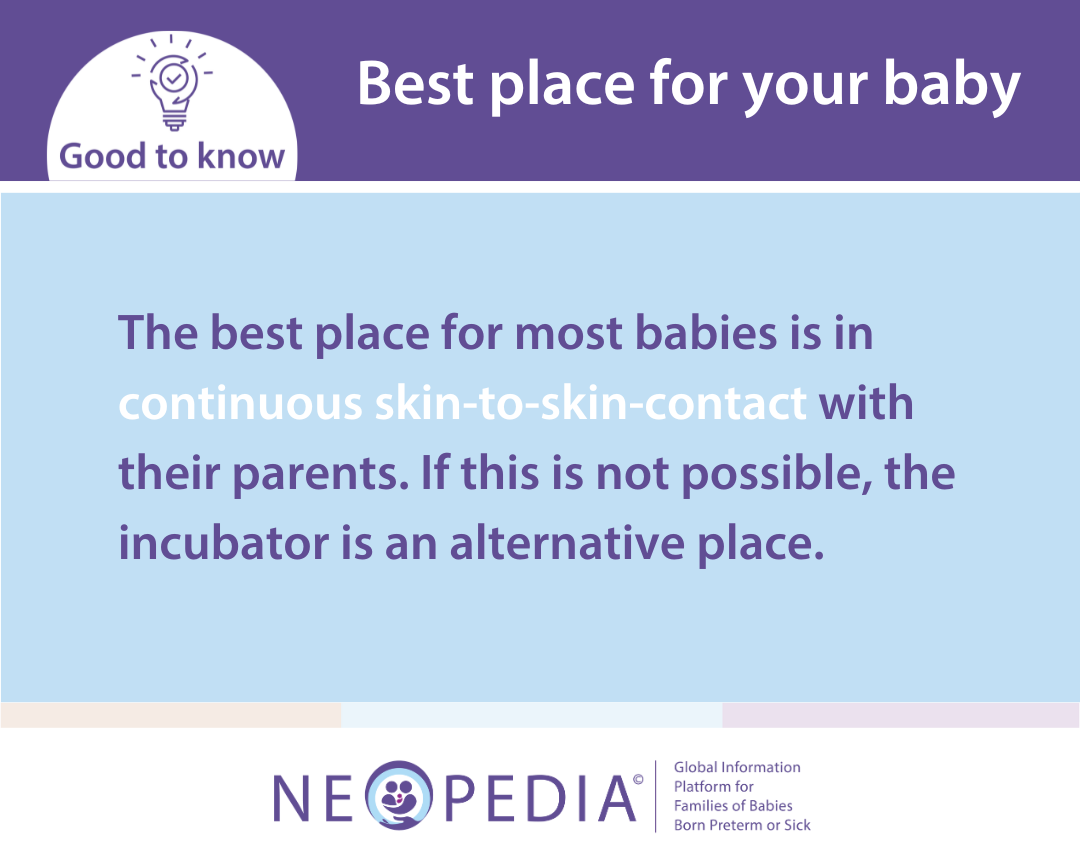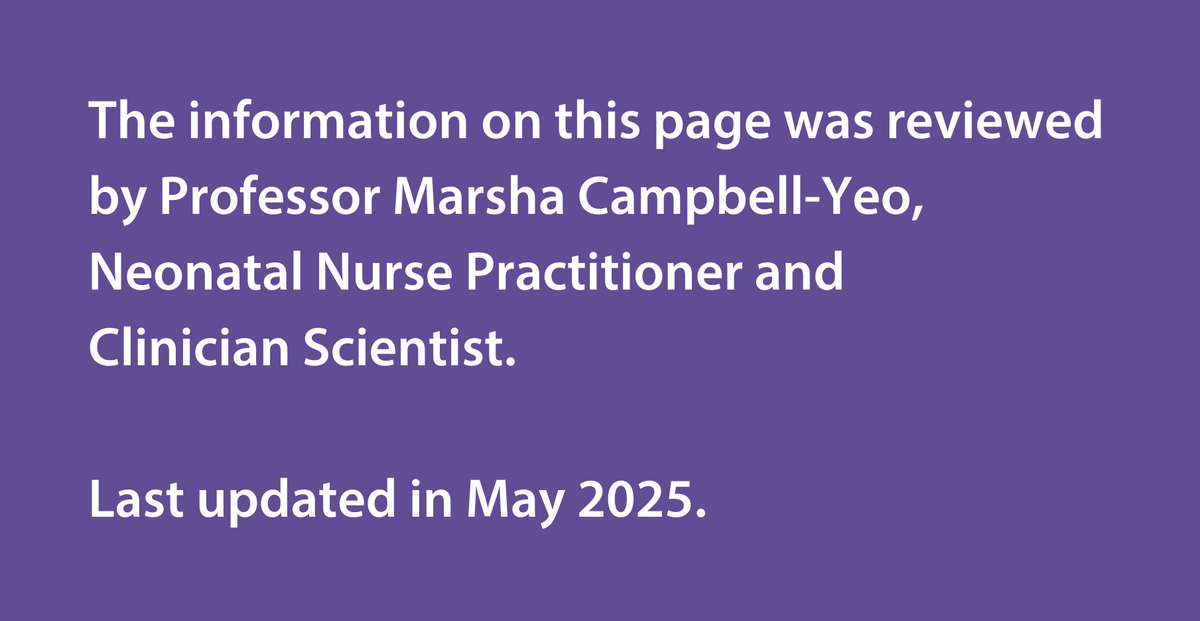A NICU has special beds called incubators to regulate humidity and to keep preterm and sick babies warm, monitoring their vital signs closely. Babies may get fluids and medications through IV lines (intravenous lines that doctors use to give medicine and fluids directly into patients’ veins). Ventilators and CPAP (continuous positive airway pressure) machines help the babies breathe, providing extra oxygen through nose tubes, or a bag and mask could also be used to help them breathe if necessary. Blue light therapy can be used to treat jaundice in the incubator.

Incubators are special baby beds that provide heated, humidified air to help preterm and sick babies maintain their body temperature. The temperature inside can be adjusted to meet the baby's needs and is monitored on an external screen. Humidity is crucial for very preterm babies to prevent moisture loss.
As babies grow stronger, they are gradually moved to open care beds with heated mattresses or warmers to help them adjust.
Vital signs, including breathing rate, heart rate, blood pressure⍰, body temperature, and oxygen levels, are closely monitored in the NICU. Small sensors on the baby's body send information to monitors that alert the NICU care team if there are any issues. Nurses or midwives regularly check and record these vital signs to ensure the baby’s stability.
Infusion therapy involves using IV lines and pumps to deliver fluids, medications, and nutrients accurately to the baby. There are different types of catheters, like IV lines for short-term use and PICC⍰ lines or umbilical catheters⍰ for longer-term needs. These tools help manage the baby's intake and ensure right hydration⍰ and nutrition.
Ventilators support or take over a baby's breathing. A tube connected to a ventilator is placed in the baby’s windpipe to provide measured breaths. High-frequency ventilators may be used for severe respiratory issues. Babies are gradually weaned off ventilators as they improve.
CPAP machines blow warm, moist air into a baby’s lungs to keep them partially inflated, making it easier for the baby to breathe. This method is often used for babies transitioning off ventilators or those with mild breathing issues.
Some babies need extra oxygen even after they can breathe on their own. This is provided through thin tubes in their nose, either in the NICU or at home with portable oxygen equipment.
If the baby has a prolonged pause in their breathing, an apnea, the healthcare worker may provide stimulation by touching or gently massaging the baby to remind them to take a breath. If the stimulation does not work, the healthcare worker may need to provide assisted breaths to the baby using a bag and mask breathing device.

